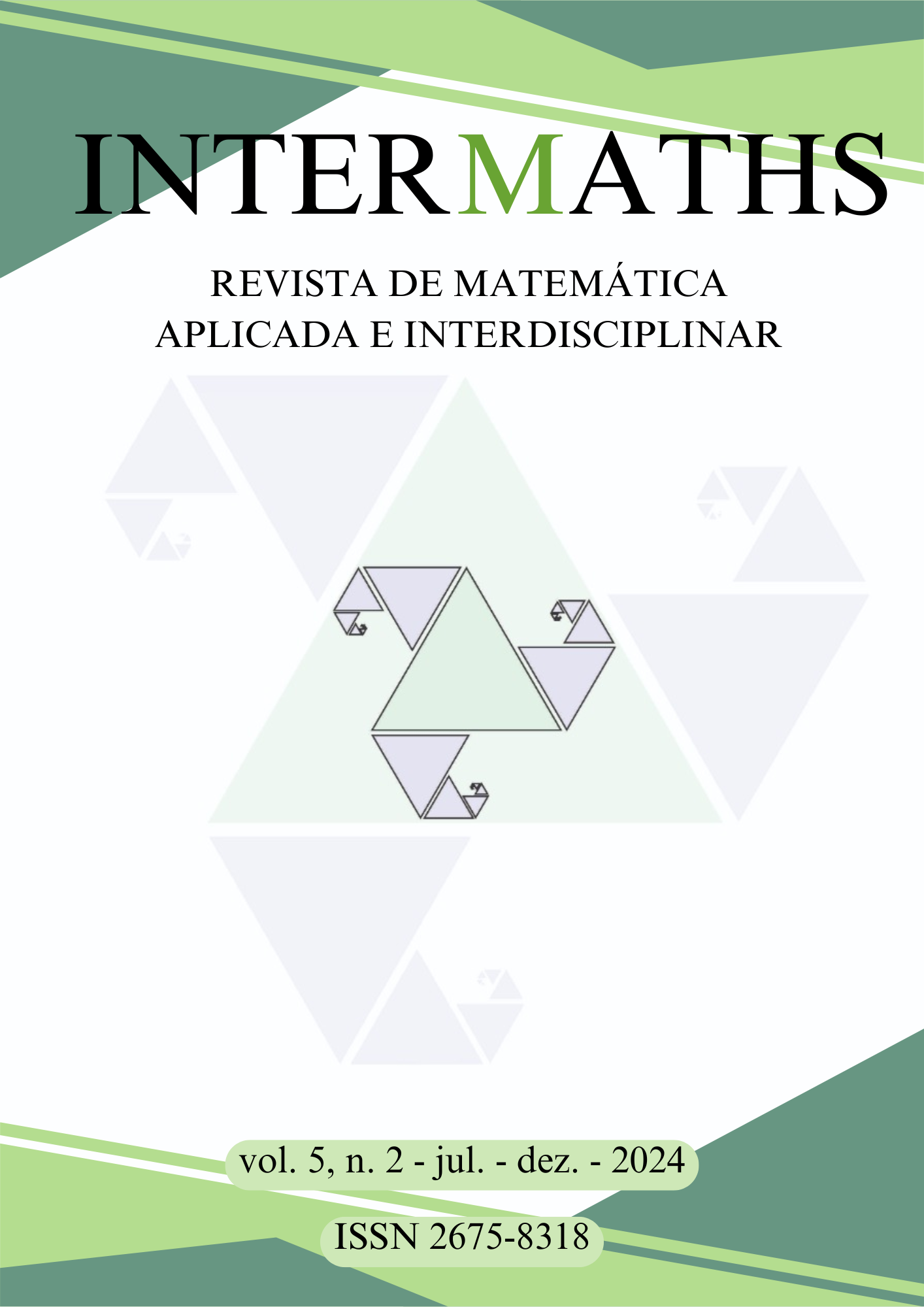Sistemas Criptograficos usando Curvas Elípticas
DOI:
https://doi.org/10.22481/intermaths.v5i2.15134Palavras-chave:
Curvas Elípticas, Sistemas Criptograficos, SegurançaResumo
Neste trabalho iremos discutir e comparar alguns Criptosistemas baseados em Curvas Elípticas. E por quê usar as Curvas Elítpticas em Criptografia? O motivo principal é que elas fornecem segurança equivalente aos sistemas clássicos usando menos bits. Por exemplo, em [1] foi estimado que o tamanho de uma chave de 4096 bits para o sistema RSA fornece o mesmo nível de segurança do que 313 bits num sistema usando Curvas Elipticas. Isto significa que a implementação para sistemas com Curvas Elípticas requer chips de menor tamanho, menor consumo de energia, entre outros fatores. Em [4], os autores fizeram um experimento num pequeno dispositivo port´atil (3Com’s Palm Pilot) maior que um cartão inteligente mas menor que um laptop. Eles verificaram que gerar uma chave de 512-bit RSA toma 3,4 minutos, enquanto gerar uma chave de 163-bit no sistema ECC-DSA toma 0,597 segundos. Embora certos procedimentos, como verificação de assinaturas, tenham sido um pouco mais rápidos para o RSA, os métodos com Curvas Elípticas, como ECC-DSA, oferecem maior velocidade em diversas situações.
Downloads
Metrics
Referências
I. F. Blake, G. Seroussi and N. P. Smart, “Elliptic Curves Cryptography”, volume 265 of
London Mathematical Society Lecture Notes Series. Cambridge University Press, Cambridge,
Reprint of the 1999 original.
L. C. Washington, “Elliptic Curves Number Theory and Cryptography”, CRC Press A
Chapman and Hall, Book 2008.
M. Abdalla, M. Bellare and P. Rogaway, “The Oracle Diffie-Hellman assumption and an
analysis of DHIES”, Topics in Cryptology- CT RSA 0, volume 2020 of Lectures Notes in
Computer Science, Springer, Berlin, 2001, pages 143-158.
D. Boneh, “The decision Diffie-Hellman problem”, In Algorithmic number theory (Portland,
OR, 1998), volume 1423 of Lecture Notes in Comput. Sci, pages 48-63. Springer-Verlag,
Berlin,1998.
N. Koblitz, “Introduction to elliptic curves and modular forms”, volume 114 of graduate
texts in Mathematics. Springer-Verlag, New York, second edition, 1994.
A. J. Menezes, P. C. van Oorschot, and S. A. Vanstone, “Handbook of applied cryptography”,
CRC Press Series on Discrete Mathematics and its Applications. CRC Press, Boca Raton,
FL, 1997. With a foreword by R. L. Rivest.
X. Wang, Y. Yin, Yiqun, and H. Yu, “Finding collisions in the full SHA-1”, Advances in
cryptology- CRYPTO 2005, volume 3621 of Lecture Notes in Comput. Sci. pages 17-36,
Springer, Berlin, 2005.
A. Joux, “A one round protocol for tripartite Diffie-Hellman”, In Algorithmic Number
Theory (Leiden, The Netherlands, herefore maps2000), volume 1838 of Lecture Notes in
Comput. Sci., pages 385-394. Springer-Verlag, Berlin, 2000.
Publicado
Como Citar
Edição
Seção
Licença
Copyright (c) 2024 Intermaths

Este trabalho está licenciado sob uma licença Creative Commons Attribution 4.0 International License.
 All content of Revista INTERMATHS/Journal INTERMATHS is licensed under a Creative Commons - Atribuição 4.0 Internacional (CC-BY 4.0).
All content of Revista INTERMATHS/Journal INTERMATHS is licensed under a Creative Commons - Atribuição 4.0 Internacional (CC-BY 4.0).







